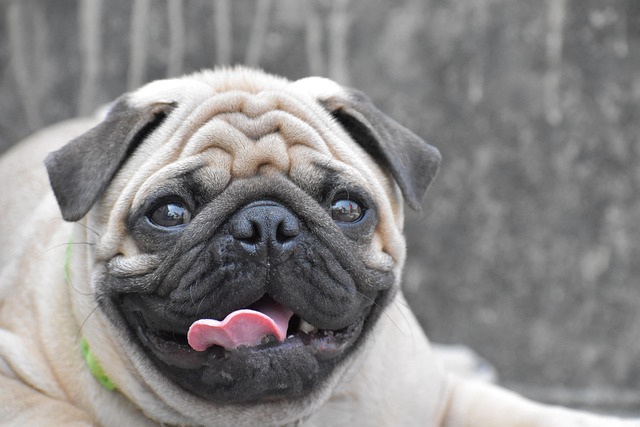
What is glaucoma in a dog?
You might notice your dog squinting more at mealtime or avoiding bright sunlight—these small changes could be early signs of a serious eye condition.
Ever picked up a wrinkly Shar Pei or cooed over a Pug’s squishy face only to notice a faint odor or redness? Those adorable skin folds that give certain breeds their signature look aren’t just cute quirks—they’re high-maintenance hotspots. Unlike their smooth-coated counterparts, breeds like Bulldogs, Bloodhounds, and Shih Tzus require specialized care to keep those folds clean and healthy. But where do you start?
First off, understanding the science helps. Skin folds trap moisture, warmth, and debris, creating the perfect breeding ground for bacteria and yeast. In Florida, a French Bulldog owner discovered this the hard way when her pup’s persistent scratching led to a vet visit. Turns out, neglecting daily fold checks had allowed a minor irritation to balloon into a costly infection. This isn’t just an inconvenience—it’s a welfare issue. Many US states, including California, have animal cruelty laws that consider untreated medical conditions, like neglected skin folds, as violations.
Regular cleaning is non-negotiable, but it’s all about technique. Skip harsh soaps—your dog’s skin has a delicate pH balance. Instead, opt for a vet-approved, fragrance-free wipe. Gently lift each fold, checking for discoloration, bumps, or crustiness. For deeper folds, use a soft, damp cotton ball to reach every crevice. Remember those doggy hygiene stations popping up at European dog parks? They’re stocked with hypoallergenic wipes for a reason—even seasoned owners sometimes forget a quick check after muddy walks.
 Prevention goes beyond daily wipes. In humid climates like the UK, breathable mesh vests can reduce friction and sweat buildup. Breeders in the Netherlands often recommend trimming the hair around folds to minimize debris collection. And don’t overlook diet: Omega-3 supplements, proven to boost skin health in 70% of dogs according to a 2023 veterinary study, can enhance natural barrier function.
Prevention goes beyond daily wipes. In humid climates like the UK, breathable mesh vests can reduce friction and sweat buildup. Breeders in the Netherlands often recommend trimming the hair around folds to minimize debris collection. And don’t overlook diet: Omega-3 supplements, proven to boost skin health in 70% of dogs according to a 2023 veterinary study, can enhance natural barrier function.
However, some folds demand professional attention. In Canada, new owners are legally required to disclose pre-existing conditions when selling dogs. If you notice pus, swelling, or your dog’s constant pawing at the folds, it’s time for a vet visit. Antibiotics or antifungal treatments may be necessary, and in severe cases, corrective surgery could be the best option. Just make sure any procedure complies with local animal welfare regulations—European Union laws, for instance, strictly regulate cosmetic surgeries.
Navigating skin fold care can feel overwhelming, especially when juggling work and puppy training. But think of it like building a relationship—each cleaning session is a chance to bond. Next time you’re wiping down your Bulldog’s adorable wrinkles, remember: a few extra minutes now can save weeks of worry later. And if you’re still unsure, many local shelters offer free pet care workshops, where you can learn hands-on techniques from seasoned handlers.

You might notice your dog squinting more at mealtime or avoiding bright sunlight—these small changes could be early signs of a serious eye condition.

Let’s set the scene: It’s a sweltering Phoenix afternoon—105°F outside—and you rushed your 2-year-old Lab mix, Cooper, on a quick walk to “get it over with.”

Let’s get real: You’re in your Miami apartment, watching your 3-year-old Corgi, Loki, struggle to climb the stairs to your second-floor unit.

Many dog owners brush off occasional scratching as just “dog behavior,” but persistent itching often signals something more—like a food allergy.

You might first notice your dog scratching more than usual—chewing at their paws until the fur looks thin, or rubbing their face against the couch nonstop.

Let’s be real: You’re standing in your Chicago apartment, watching your 3-year-old Beagle, Max, huff and puff just to climb onto the couch.